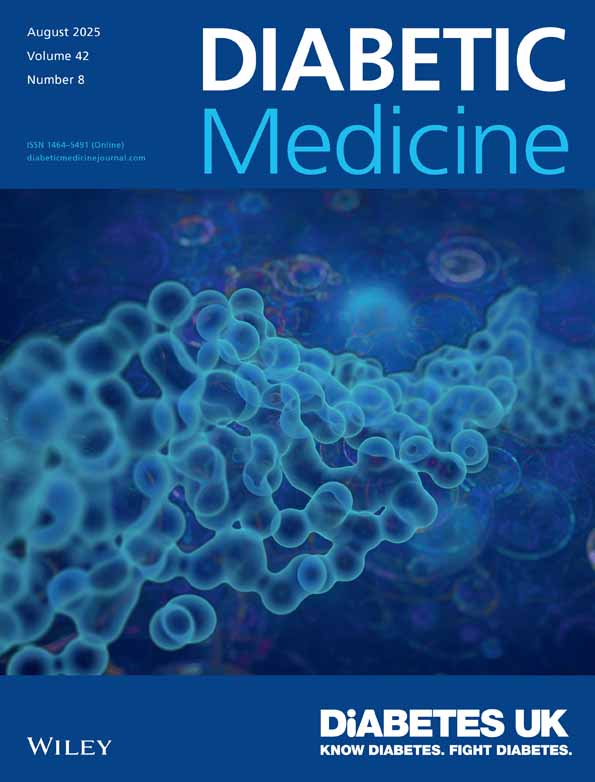Consistency of pupillary abnormality in children and adolescents with diabetes
Abstract
Repeat measurements on pupillary adaptation to darkness were performed in a cohort of 66 children and adolescents with insulin-dependent diabetes mellitus (IDDM) (initial age 6.9–17.0 years) after a mean interval of 3.5 years, using a portable pupillometer. While there was a close correlation between the results of the two studies (r = 0.94, p < 0.001), the pupillary dilatation, the ratio of the pupil diameter to the iris diameter % (PD%), had decreased significantly (61.5 % vs 62.9 %, p < 0.001) over these 3.5 years in children with diabetes. The same measurements were performed on 89 healthy control children in the first study and 66 in the reassessment period and PD% was not significantly different in the two control groups. Five children with diabetes identified as having abnormal pupillary dilatation in the first study were outside the normal range 3.5 years later. In addition 4 children in whom initial testing had been normal, showed abnormality at the time of the second study. None of these children had symptoms of autonomic neuropathy. These findings suggest that abnormality in pupillary adaptation in diabetic children is consistent and increases with time and may serve as an early marker of tissue damage associated with diabetes. © 1997 John Wiley & Sons, Ltd.




